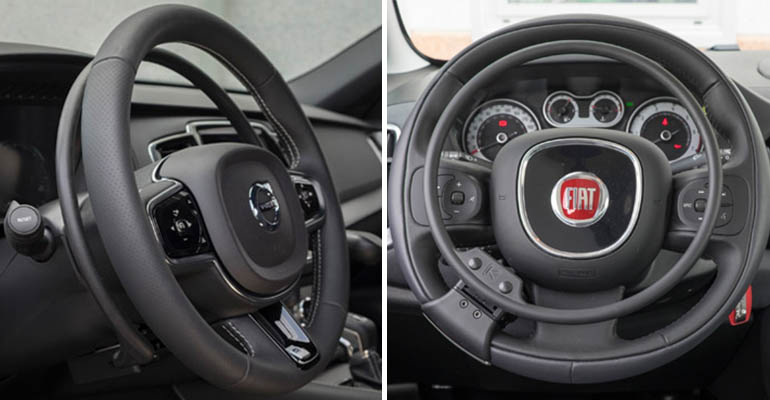
© Photos by Kivi Mobility
Gas ring
This device has the same functionality as the accelerator pedal but in the form of a slim ring that sits slightly above or below the steering wheel. Pushing, or rather squeezing, the ring closer to the steering wheel makes the car accelerate. The solution allows you to constantly keep two hands on the wheel.
Although, it doesn't force you to use two hands. Engaging the gas ring does not require much force and can easily be done with one hand. This means that it’s quite possible for you to temporarily let go with one hand and to adjust the radio or ACC.
Another benefit of the ring shape is that it allows you to have your hands anywhere on the steering wheel. In other words, you can change grip to prevent fatigue.
As the gas ring only controls the acceleration, operating the brake needs to be handled by something else. If you have left foot functionality, it can be operated via the original pedal. It can also be relocated to a brake ring, on the opposite side of the gas ring. The third alternative for the brake could be a hand control lever.
Pros
- + Enables you to keep both hands on the wheel while driving.
- + Keeps your hands in reach of turn indicators and wipers etc.
- + Ring shape lets you change your grip
- + Installation is often completely reversible.
- + Does not hinder the use of the accelerator or brake pedals
Cons
- - Requires separate control for the brake, either as a lever or another ring.
- - Requires the car to have an automatic transmission.